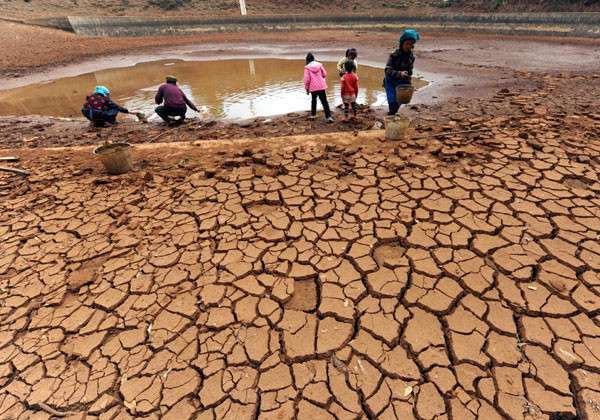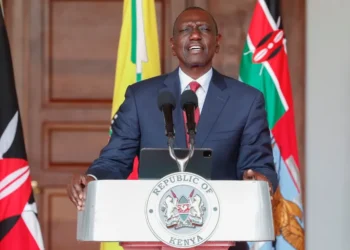A recent report from the United Nations Aid Coordination Office (OCHA) highlights a troubling surge in food insecurity levels in Zimbabwe, largely attributed to historic droughts spurred by the El Niño weather pattern.
This alarming update follows a previous declaration by UN humanitarians just two months ago, identifying Zimbabwe as one of the hunger hotspots where acute food insecurity was predicted to worsen.
The devastating drought has obliterated over half of the nation’s harvest, putting approximately 7.6 million people at risk of severe hunger.
El Niño, a recurring and naturally occurring climate phenomenon, disrupts air temperatures over seas and coastal lands. However, the climate crisis has intensified these weather patterns in recent years.
High-ranking officials from the UN and the World Food Programme (WFP) recently conducted a visit to Zimbabwe to assess the drought’s impact and appeal for increased international support for humanitarian efforts.
Nationwide State of Disaster
In April, Zimbabwean authorities declared the country in a state of national disaster. Data from local officials reveal that 57 percent of rural populations are expected to face food insecurity between January and March 2025, which is traditionally a peak hunger period.
Other UN reports suggest that civilians will have to rely on “alternative sources of income, social support, and humanitarian assistance” to endure this period.
The reports also state, “Humanitarian assistance needs will remain high in many areas of the country until the harvest in 2025 due to poor purchasing capacity resulting from limited income-earning opportunities and high food prices.”
El Niño’s Impact
The droughts induced by El Niño have severely impacted Zimbabwe’s economy, leading to more than a fifth of children being out of school and causing significant water shortages.

The UN and its partners are collaborating with the Zimbabwean government to deliver aid to those in need, but the efforts are underfunded.
A $429 million flash appeal launched in May, intended to assist over 3 million people, has received only about 11 percent of the required funds.
These El Niño-induced droughts are not confined to Zimbabwe alone but have also wreaked havoc in other southern African nations, including the Democratic Republic of the Congo, Zambia, Madagascar, and Malawi. Each of these countries faces increased food insecurity levels and urgently requires humanitarian intervention.
A report titled “Southern Africa Food Security Outlook June 2024 – January 2025” also indicates that acute food insecurity is likely to worsen amid ongoing drought conditions into 2025.
The prolonged dry spell is expected to critically degrade water and pasture availability for livestock, leading to poor livestock conditions, increased diseases, low incomes from sales, and heightened risks of livestock deaths before the anticipated rains in October/November.
Looking Ahead
Forecasts suggest that the upcoming 2024/25 rainy season will bring average to above-average rainfall, which should help recharge dams, streams, and rivers, and regenerate pastures, thereby improving livestock conditions from October/November.
However, income from livestock sales may remain low due to poor liquidity among households.
Moreover, the predicted La Niña for the 2024/25 rainy season is expected to enhance income opportunities from seasonal agricultural labor, such as land preparation, planting, and weeding, through January 2025.
Nonetheless, payments in cash and kind are projected to stay below average due to the diminished capacity of wealthier households to employ and pay poorer households.
The situation in Zimbabwe and the broader southern African region underscores the critical need for swift and substantial international assistance to mitigate the impacts of the drought and support the affected populations through these challenging times.
READ ALSO: Government Announces Reintroduction of Road Tolls to Fund Infrastructure





















